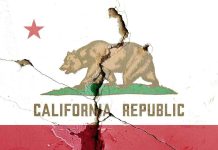
President Trump has issued a bold ultimatum regarding the U.S.-China trade deal, threatening unilateral tariff decisions should China fail to cooperate.
Key Takeaways
- President Trump announced the contingency plan to unilaterally set trade terms with China if negotiations falter.
- The White House has indicated progress in trade talks with China but maintains high tariffs as leverage.
- Current U.S.-China tariffs have significantly escalated, impacting the stock market and economic stability.
- Trump urges the Federal Reserve to reduce interest rates amid financial volatility.
- More countries are engaging the U.S. for potential trade deals to avoid tariffs.
Trade Tensions Escalate
President Trump has made a clear stance on U.S.-China trade negotiations, prioritizing unilateral actions should talks with China stall. The administration is confronting what it sees as a trade deficit nearing $2 trillion, demanding a renegotiation or imposition of strict tariffs. With the current economic strategy, high tariffs remain a critical tool to assert pressure on China.
China’s counter-tactics include a 125% retaliatory tariff on U.S. goods, while U.S. tariffs on Chinese goods have soared to 245%. These escalating tariffs have caused stirrings in the global stock markets, leading to instability and increased interest rates on U.S. debts. China, shocked by the U.S. stance, criticizes the tariffs as sources of global trade destabilization.
Diplomatic Strategies and Market Impacts
The financial world closely watches the negotiation progress. Treasury Secretary Scott Bessent points out the difficulties in U.S.-China talks, expecting de-escalation but acknowledging the challenging status quo. Bessent’s assurances of maintaining promising negotiations resulted in a significant 2.5% rise in the S&P 500 index.
“I do say China is going to be a slog in terms of the negotiations,” Bessent said. “Neither side thinks the status quo is sustainable.”
There’s a consensus around the need for a resolution. President Trump is optimistic about a potential agreement, yet he refrains from confirming Bessent’s views on the unsustainable nature of the situation. Meanwhile, he urged the Federal Reserve to cut interest rates, indicating future fiscal flexibility, although he stated no plan to dismiss Fed Chair Jerome Powell.
President Trump’s Strategic Approach
Looking beyond China, Trump pauses global tariffs barring China, extending olive branches to other nations. Countries seeking trade agreements with the U.S. aim to alleviate tariff burdens. The White House has received numerous proposals, reflecting a bustling international interest in U.S. trade partnerships.
The Chinese government has warned other countries against forming trade agreements with the U.S., arguing potential harm to Chinese interests. Some countries report pressure from China to comply with their restrictions on U.S. interactions involving Chinese-sourced minerals, showing the complexity and far-reaching impacts of these trade decisions.





